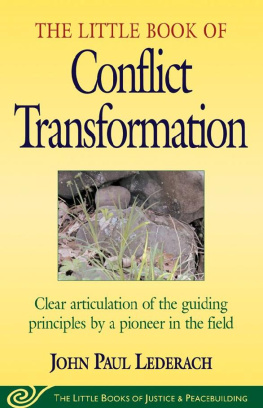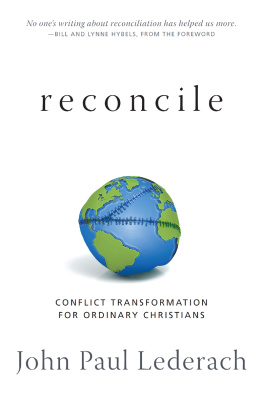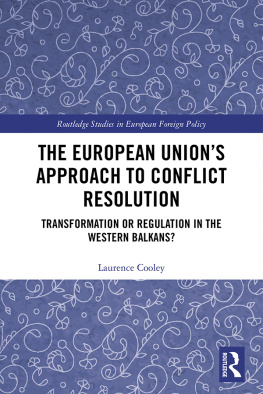Copyright 2014 by John Paul Lederach
All rights reserved. No part of this book may be reproduced in any manner without the express written consent of the publisher, except in the case of brief excerpts in critical reviews or articles. All inquiries should be addressed to Good Books, 307 West 36th Street, 11th Floor, New York, NY 10018.
Good Books books may be purchased in bulk at special discounts for sales promotion, corporate gifts, fund-raising, or educational purposes. Special editions can also be created to specifications. For details, contact the Special Sales Department, Good Books, 307 West 36th Street, 11th Floor, New York, NY 10018 or info@skyhorsepublishing.com.
Good Books in an imprint of Skyhorse Publishing, Inc., a Delaware corporation.
Visit our website at www.goodbooks.com.
10 9 8 7 6 5 4 3 2 1
Library of Congress Cataloging-in-Publication Data is available on file.
Design by Dawn J. Ranck
Cover photo credit Howard Zehr
Print ISBN: 978-1-56148-390-7
Ebook ISBN: 978-1-68099-042-3
Printed in the United States of America

Published titles include:
The Little Book of Restorative Justice, by Howard Zehr
The Little Book of Conflict Transformation by John Paul Lederach
Forthcoming titles or topics include:
The Little Book of Family Group Conferences, New-Zealand Style by Allan MacRae and Howard Zehr
The Little Book of Peacebuilding
The Little Book of Negotiation
The Little Book of Circle Processes
The Little Book of Group Processes for Difficult Issues
The Little Book of Biblical Justice
The Little Book of Restorative Discipline for Schools
The Little Book of Restorative Justice for Prisoners
The Little Books of Justice and Peacebuilding present, in highly accessible form, key concepts and practices from the fields of restorative justice, conflict transformation, and peacebuilding. Written by leaders in these fields, they are designed for practitioners, students, and anyone interested in justice, peace, and conflict resolution.
The Little Books of Justice & Peacebuilding series is a cooperative effort between the Conflict Transformation Program of Eastern Mennonite University (Howard Zehr, Series General Editor) and publisher Good Books (Phyllis Pellman Good, Senior Editor).
Acknowledgments
Writing a Little Book was much harder than it appears. I had help along the way. First, I want to extend a warm and deeply appreciative thank you to Howard Zehr for conceptualizing this Little Book Series and encouraging my involvement. More importantly, he had the first crack at helping me move from a verbose text to one that got to the point. I appreciate the excellent editing and sharpening that this text received from Phyllis Pellman Good. It would not read this well without her advice and suggestions. I had a great boost on the computer-generated graphics from my good friends at the Consortium on Conflict Resolution from the University of Colorado, particularly from Heidi and Guy Burgess. Of particular note, I had the wonderful opportunity of having the Masters students from the Kroc Institutes (Notre Dame) class of 2002-2003 read my first draft and spend a full day of class improving and clarifying the concepts. Their ideas and suggestions are found throughout.
I would like to extend a big note of gratitude to John and Gina Martin-Smith for the use of their house in Nederland, Colorado, where I got to watch the aspens turn from green to yellow at 8,500 feet as I wrote this text.
Finally, I recognize that none of my writing would take place without the patient support and encouragement of my family, especially Wendy, with whom I have had many coffees while discussing the ideas found in this book and how to say them better.
Table of Contents
Conflict Transformation?
C onflict resolution ... conflict management ... but conflict transformation ?
I began using the term conflict transformation in the 1980s, after intensive experience in Central America caused me to re-examine the language of the field.
When I arrived there my vocabulary was filled with the usual terminology of conflict resolution and management. I soon found, though, that my Latin colleagues had questions, even suspicions, about what was meant by such concepts. For them, resolution carried with it a danger of co-optation, an attempt to get rid of conflict when people were raising important and legitimate issues. It was not clear that resolution left room for advocacy. In their experience, quick solutions to deep social-political problems usually meant lots of good words but no real change. Conflicts happen for a reason, they would say. Is this resolution idea just another way to cover up the changes that are really needed?
Their concerns were consistent with my own experience and perspective. My deepest sense of vocation, and the framework that informs much of this book, arises from a faith context that is grounded in an Anabaptist/Mennonite religious-ethical framework. This perspective understands peace as embedded in justice. It emphasizes the importance of building right relationships and social structures through a radical respect for human rights and life. It advocates nonviolence as a way of life and work.
So the concerns of my Latin colleagues hit home. In my work of helping to find constructive responses to violent conflict in Central America and elsewhere, I became increasingly convinced that much of what I was doing was seeking constructive change. Conflict transformation seemed to convey this meaning better than conflict resolution or management .
Conflict is normal in human relationships, and conflict is a motor of change.
In the 1990s, when I helped found the Conflict Transformation Program at Eastern Mennonite University (EMU), we had extensive debates about titles and terms. Resolution was better known and was widely accepted in mainstream academic and political circles. Transformation seemed too value-laden for some, too idealistic for others, and too airy-fairy and new-age for still others. In the end, we stuck with the transformation terminology. We believed it was accurate and scientifically sound and that it provided a clear vision.
For me, conflict transformation is accurate because I am engaged in constructive change efforts that include, and go beyond, the resolution of specific problems. It is scientifically sound language because it is based on two verifiable realities: conflict is normal in human relationships, and conflict is a motor of change. Transformation provides a clear and important vision because it brings into focus the horizon toward which we journeythe building of healthy relationships and communities, locally and globally. This goal requires real change in our current ways of relating.
But the question remains, what does transformation really mean?
Over the past decade or so, the terminology of transformation has become increasingly common in both practitioner and academic circles. There are transformational approaches in mediation as well as in the broader discipline of peace and conflict studies. In fact, I am now part of two graduate academic programs that use this terminology, the Joan B. Kroc Institute for International Peace Studies at Notre Dame and the Conflict Transformation Program at EMU. In spite of this, conflict transformation is not as yet a school of thought. I do believe that conflict transformation is a comprehensive orientation or framework that ultimately may require a fundamental change in our way of thinking.










